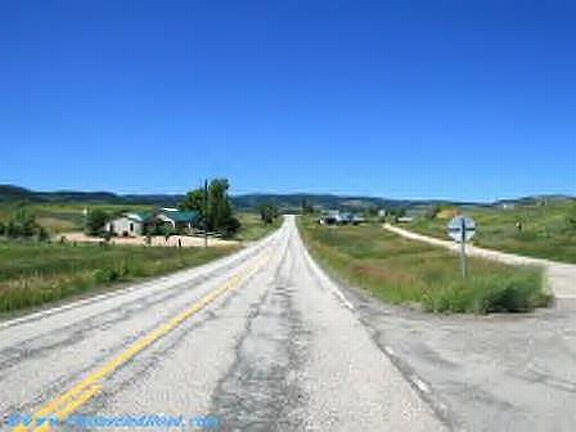
Sharon History

Westbound State Highway 36
Information comes from Treasured Tidbits of Time Volume I by Jens Patrick Wilde and is a condensed version
Sharon began as an outgrowth of the original settlers at Liberty. For a while it was known as North Liberty and when the first branch of the LDS Church was organized it was known as the North Liberty Branch. That name was not satisfying to the settlers and for years they sought to change the identity by separating themselves completely from the Liberty group. Sometimes the unofficial name of the community was Emigration, but on Feb 4, 1897, John T Lyon, first presiding elder of the branch suggested the name of Sharon after the birthplace of the founder Joseph Smith.
Exactly when the first settlers moved into the area is not known for many groups had passed over the land before the steams encouraged settlement. The first person who settled the area was one of the last mountain trappers, John Snider. He was in the area as early as 1867 and often encouraged incoming groups to move on through for more level ground. He had at least three cave like dugouts, one in North Canyon, on in Mill Canyon and on in Copenhagen Basin.
Mills operating on the stream changed the name in Mill Creek and as early as 1869 a hand operated sawmill was functioning in the area. later Walter Hoge and Charles W Nibly conducted the first water powered mill. William G Smith was the foreman.
For about 10 years the early settlers attended church meetings in Liberty. Then a small log church house with one single room was constructed to serve both as school and church. It is believe that the first man to build a cabin was Arnold Merk in 1872.
The early cooperative was called the Union Dairy and it employed several people through the summer months and obtained much of the stock from Paris and Bloomington. Samuel Humphreys operated the dairy in 1880 and later took over the Church ranch in Nounan Valley. James McMurray was the first herd wrangler for the dairy. Numerous girls were employed as milk maids also. Among the first were Nettie Bee, Sarah Shepherd, Elvira Ricks, Maria Neilson and Sarah Hoge. Each girl was required to milk 20 cows per day, help with the cleaning of the vats and buckets and was paid $1.00 per week and their board.
Joseph Wixom married one of the early milk maids, Elvira Ricks and they homesteaded the area in 1880 at the mouth of the Emigration canyon. He is credited with planting the first crops in the area as well as an orchard and raspberries. Thomas Gambling filed homestead rights in 1884 and soon after George Sleight took up land on which the first acreage of grain was planted.
Joseph and Elvira are credited with the first child born in Sharon, Lewis Wixom. For several years their home served as the community center for social activities. It had the largest room available.
In 1899 another sawmill was developed in North Canyon by Albert Beutler. This mill offered employment for several families and Sharon soon reached a peak growth of 250 people. Following John Thomas Lyon as presiding elder was Samuel E Hymas who served until June 23, 1901 when the Sharon ward was organized. Schools began about 1874 and were held for two to 10 weeks during the summer months. A regular session was established in 1875 when a two room school was built. In 1916 a new two room frame building was built and doubled as a school and church. In 1926 a separate church building was built and John Gambling was the first Bishop. The schools were dissolved in the 1950s and the Sharon Ward was dissolved and joined with Liberty Ward.
For a while there was speculation that Sharon
would be come the "Pittsburgh of the West" when well diggers were searching for
water and hit a vein of coal. It was even considered that a railroad would
be built through Emigration Canyon but none of this came to pass.